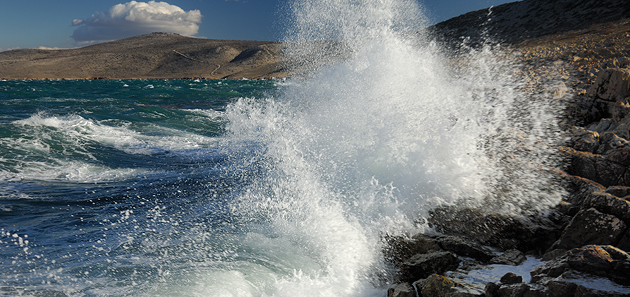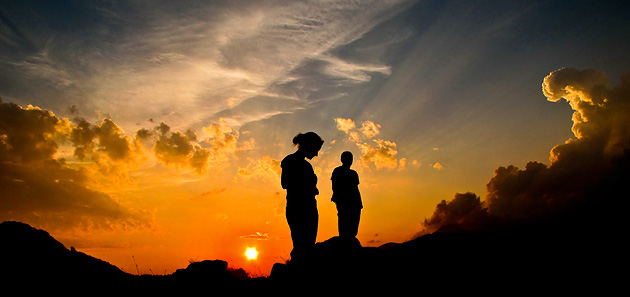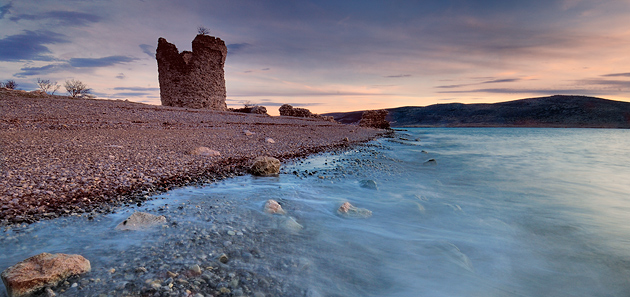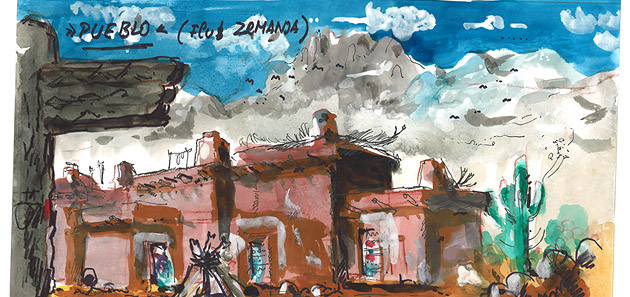



Culture and history › Interesting facts
THE LEGEND OF KING PASOGLAV
Many legends have been told about Večka Tower. The best-known among them is the legend of King Pasoglav ("Doghead"):
Once upon a time there was a king who had a human body and a dog’s head. Every day a different young man would come to shave him, after which the king would have him killed in order to keep his secret.
Hoping to save the life of her only son, a mother thought out a scheme. When his turn came to go and shave the king, she made a bred with her own milk and gave it to her son to offer it to the king. After the king had eaten the bread, the young man told him why it was so tasty. Since now they had become brothers in milk, the king decided to let the young man go, under the condition that he would not betray the secret about his dog’s head.
The young man kept the secret for a long time, but sooner or later he was bound to betray it. So he decided to tell the secret to the black earth. He dug a hole and whispered: “O black earth, our king has a dog’s head”. Chance would have it that an elder would grow at that spot, and a shepherd would make a flute from it. When the shepherd attempted to play the flute, words came out of it instead, saying: “Our king has a dog’s head!” The secret became public all across the kingdom. The king was doomed to spend the rest of his life alone and unshaven, while young men no longer feared death at his tower.
THE VELEBIT'S STORY ABOUT WATER
Not so long ago, scarcity of water on Velebit Mountain’s maritime slopes was one of the greatest adversities in the hard life of its inhabitants. Since Velebit is built of highly permeable limestone rock, rainwater quickly disappears in underground cavities. Reliable springs are rare and scanty, while permanent watercourses are virtually nonexistent. Hot summers with plenty of sunshine, as well as the frequent bura wind that amplifies evaporation, enhance the aridity.
Reserves of rainwater collected during winter and spring had to last through the long dry summer until the first abundant autumn rains. Cisterns were built for storage of the precious water. Rainwater poured into the reservoir, conveyed by gutters from stable or barn roofs. Sometimes, natural flat rock faces were used as collecting surfaces. Roofs of houses that served for human habitation were seldom used, since they often lacked chimneys and were sooty.
The cistern usually stood in the courtyard. Its surface often served as a pretty terrace, shaded with grapevine arbour that provided additional protection from heat. The opening of the cistern was closed by a strong cover and locked in order to prevent water theft. In a well-kept cistern, water was clean and fresh, but the modest reserves accumulated during the rainy season could not meet the household needs in the long dry summer.
Since many households could not afford building their own wells and cisterns, large public wells and cisterns were built and used by all. Cisterns provided potable water, while water from wells was used for washing and watering the animals. Cisterns were located at the foot of natural water draining surfaces, while wells were dug in places where water collected above impermeable layers due to natural ground configuration.
A sloping rainwater collection surface was built above the communal cistern. In early times, it was paved with smooth stone slabs, while later it was made of concrete. The number of villagers and the mean annual rainfall determined its size. A high enclosing wall protected it from contamination. Water percolated from the collection surface through filters made of sand and gravel.
An opening known as throat or crown provided access to the water. It was sometimes hewn from a single stone block, or built from several dressed stones. A metal bucket (cigalj) hung above it from a pulley, attached to a chain or rope.
In the late 19th and early 20th century, Austro- Hungarian authorities strived to improve water supply in Dalmatia by building large cisterns. Public cisterns in Starigrad-Paklenica, Seline, and Tribanj were built at that time.
In small mountain hamlets, cisterns were often absent. Their poor inhabitants could barely afford their construction. They had to struggle in various ways in order to obtain the precious potable water. People used rainwater collected in natural rock basins called kamenice. In the old days, well-kept rock basins could be found near every house. If their water was to remain clean, they had to be carefully fenced off and protected from animals. In the absence of rock basins, rainwater could be collected in hollow beech or maple tree trunks, cut off a yard or two above the ground.
When cisterns and rock basins went dry, one had to fetch water from high up in the mountain, where snow lies throughout the year at the bottom of deep pits. It was mostly women who went to the distant and inaccessible snow pits, climbing for hours through the rocky landscape. They filled large wooden vessels called burila with snow and carried them on their backs down to their homes at the foot of the mountain. The snow, melted in a kettle above the fire, or in a trough placed in a sunny spot, was transformed into crumbinfested, but life-saving water, which was used for drinking throughout the summer.
Some of the water that disappears in the karstic underground collects in caves. Several cave names, such as Jama Vodarica ("Water Cave") near the hamlet of Jurline, Curinka ("Pouring Cave") under mount Bojinac, or Kapljarka ("Dripping Cave") in Mala Paklenica Gorge, testify of their importance for the survival of Velebit’s shepherds.
When rainwater was not available, coastal village inhabitants sometimes used brackish springs at the very seashore(vrulje). Their water was distasteful and undrinkable, but could be used for cooking and watering the animals.
Animals mostly drank from water holes(lokve) that used to exist in almost every village. Water holes form innatural depressions of impermeable ground, where water lingers after the rain. Important water holes were considered public property and were artificially deepened, enclosed by walls, and lined with impermeable clay.
Thanks to the initiative of the priest don Ante Adžija, local waterworks brought running water to Starigrad- Paklenica in 1920's. After its construction, cisterns and wells lost their importance and fell into disrepair. Water supply shifted to public faucets called špine. One of them is in the hamlet of Marasovći in Starigrad. Its cool water still provides welcome refreshment to hikers returning from Velika Paklenica Gorge.
GATES OF VELEBIT – vertical dance development project
„Gates of Velebit“ was an multidisciplinary project which, through a series of dance performances, scientific lectures, artistic workshops, educational seminars and exhibitions, connected the past and the future of Velebit mountain. The major goal behind the project was the conservation of traditional mountain life habits and promotion of protected croatian natural and cultural heritage (ojkalice, nijemo kolo, mirila, suhozidi…)
The backbone of the program was the “vertical dance” as a combination of the art of dance and rock-climbing aiming at future development of this new kind of dance in Croatia.
- Program No.1 “Little tragedy” vertical dance performance, Velika Paklenica, National Park Paklenica (held in April 2013.)
- Program No.2 "Paradiese der Adria“ – ARTE TV, film by Thomas Wartmann(Filmquadrat.de) 2013.
- Program No.3 “Fading“ – vertical dance perfomans in Zadar, foto exhibition by Stipe Surać and the film „The Heart of Stone“ by Boris Šeper, 2014.
- Program No.4 “Baba`s tears” documentary dance film, 2015.
- Program No.5 “Vertical Dance Forum, 03rd -07th Dezember 2015., 1st transnational meeting Starigrad-Paklenica
- Program No.6 “Gates of Velebit” multimedia event, 2016.









